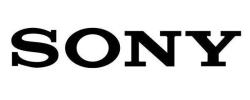Sony
We’re Updating Our Profiles Section
Stay tuned for all new and updated exclusive profiles on companies and organizations involved in the ecosystem.

While it launched NFC with Philips (now NXP) Semiconductors in 2002, Sony Corp. has produced few actual NFC chips.
But its FeliCa technology is used in more than 60 million contactless mobile-wallet phones sold in Japan since 2004, by far the largest such rollout worldwide.
Japan’s dominant mobile operator, NTT DoCoMo, drove the contactless-mobile rollout, but Sony was its key enabler. The FeliCa chip in the DoCoMo phones and wallet phones sold by other mobile operators work with FeliCa readers that also accept tens of millions of contactless cards issued by Japanese transit operators and e-money providers.
Sony and DoCoMo formed a joint venture in 2003–with Sony owning the majority of shares–to build and manage the FeliCa platform on the mobile phones. They later allowed Tokyo-regional commuter rail operator JR East to buy a 5% stake.
The venture, FeliCa Networks, controls all of the downloads and management of applications on phones. FeliCa Networks charges rather high fees from handset makers for the right to put the chip inside their devices, which the phone manufacturers pass on to the mobile operators that had ordered the phones. These licensing fees account for most of FeliCa Networks’ revenue, much more than fees from service providers for the application loading. That is unlike the business model for most budding trusted service managers, which intend to earn fees from application loading and management.
![]() With FeliCa a default feature in most mobile phones sold in Japan and used in cards and readers in large fare-collection and e-money schemes in Tokyo and other parts of Japan, FeliCa shipments are by far Sony’s largest market for contactless technology.
With FeliCa a default feature in most mobile phones sold in Japan and used in cards and readers in large fare-collection and e-money schemes in Tokyo and other parts of Japan, FeliCa shipments are by far Sony’s largest market for contactless technology.
But while proprietary FeliCa is fast and secure, it is also expensive. Some cards and readers cost twice as much or more than competing technology. All chips are either supplied by Sony or its licensees. Among those keen to escape FeliCa are DoCoMo competitors KDDI and Softbank Mobile, which must pay the fees for adding FeliCa to their phones but cannot charge service providers for putting applications on the phones.
Also, such payment card schemes as Visa and JCB want internationally standardized technology and lower costs in Japan. Even JR East has investigated ways to move to standard contactless technology, such as ISO 14443, option A or B, but found it was too costly to change its massive FeliCa infrastructure at its fare gates and point-of-sale terminals for its Suica scheme.
But if service providers in Japan are locked into FeliCa, Sony is largely trapped in Japan with the technology. It has had little success exporting FeliCa overseas, except for the landmark fare-collection and retail payment scheme, Octopus in Hong Kong, which launched in 1997.
Transit operators in Delhi and Singapore quit the technology, moving to ISO standard cards and readers.
Sony had tried to get FeliCa included in the major contactless standard, ISO 14443, when it was being finalized about a decade ago, but failed. Observers believe that is one reason Sony co-created NFC, which is covered under another ISO standard.
But Sony may be waiting until demand picks up for NFC globally before introducing an NFC chip for markets outside of Japan. An NFC joint venture with NXP, Moversa, announced in late 2007, has yet to produce a commercial NFC chip.
It seems just a matter of time, however, before Japan itself moves to NFC from proprietary FeliCa. The technologies are close and NFC devices can already support FeliCa. Even DoCoMo, which joined the NFC Forum as a top-tier sponsor member in 2007, will likely push for the change, despite its substantial investment in FeliCa technology.
In a separate development, Sony in early 2010 introduced the first devices, laptops and digital cameras, supporting its proprietary wireless TransferJet technology. Like NFC, TransferJet transfers data by just holding devices that support it only a few centimeters away from each other.
But TransferJet is intended to replace USB cables to move digital photos and other big files at super-fast speeds, not to securely send and receive small transaction data, as NFC and FeliCa can do. But NFC is also being proposed as a way to sync larger files between devices by quickly opening faster Bluetooth or password-protected WiFi connections. Might Sony one day combine NFC and TransferJet, perhaps offering more security for the file transfers than is afforded by TransferJet alone?
Mobile Phones Sold With FeliCa Chips
65 million-plus (2010)
Contactless Payment in Japan (using FeliCa chips)
| Operator | Scheme | Cards | Mobile | Terminals or merchants |
Monthly Trans. |
| bitWallet | Edy | 57.7 | 10 | 221,000 | 26.5 |
| JR East | Suica | 30.1 | 2 | 98,540 | 29.5 |
| NTT DoCoMo | iD | 15 | 11+ | 447,000* | N/A |
| Seven & i (7-11) | nanaco | 11.5 | 1.3 | 63,050 | 34 |
| Aeon | WAON | 14.7 | 1.3+ | 86,000 | 33.7 |
| JCB | QUICPay | 4.9 | N/A | 242,000* | N/A |
| Visa/ Mitsubishi UFJ NICOS | Visa Touch |
1.1 | N/A | 77,000* | N/A |
|
Cards, mobile registered users and monthly transactions in millions. Source: FeliCa Networks |
|||||
<!--[if gte mso 10]>
Visa Touch
/Smartplus
NXP Semiconductors, Inside Secure, Infineon Technologies












